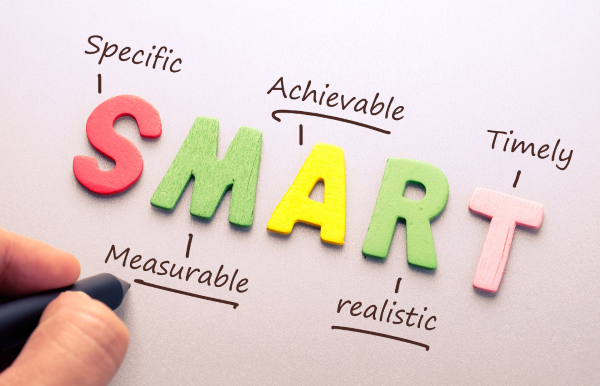Ultimate Strategies for Effective Goal Setting for Kids: A Parent's Guide
Are you looking to teach your child about setting and achieving goals? Goal setting for kids stands as an essential life skill, laying the groundwork for independence, confidence, and lifelong success. This concise guide provides you with immediate strategies to help your child establish clear goals, overcome obstacles, and enjoy the rewarding journey toward their achievements.
Key Takeaways
-
Goal setting empowers children with responsibility, improving their performance and fostering resilience, independence, and a future-ready mindset.
-
Introduce goal setting to children through meaningful conversations about aspirations and demonstrating the effectiveness of SMART goals for clarity and success.
-
Involve the entire family in the goal-setting process to boost communication, mutual respect, and provide a supportive environment, reinforcing the importance of collective effort and shared achievements.

Unlocking the Power of Goals: Why Kids Need to Set Them
The act of setting goals, particularly during childhood, is like planting seeds that will eventually bear fruit. It plays a crucial role in shaping the future of children by boosting their self-esteem, fostering resilience and nurturing an independent mindset. The impact of goal-setting on a child’s motivation and performance can be seen through how it encourages them to take responsibility for their tasks leading to better academic outcomes not just at elementary school but also middle school and high school levels.
Setting challenging goals allows young individuals to assume ownership over their actions, which positively affects both their attitude towards learning as well as developing key skills such decision-making abilities from an early age. For instance, starting up a lemonade stand gives kids control over aspects such as price points or location selection while teaching them about the power of having specific objectives in mind.
Beyond achieving desired results lies valuable lessons learned throughout this process – including establishing purposefulness within themselves (refining various cognitive functions necessary for development along with cultivating independence bit by bit) one small step after another, making way for confident leaders readying themselves toward promising futures.
Setting the Stage for Success: Introducing Goal Setting to Your Child
Introducing your child to the concept of goal setting can begin with a meaningful conversation about their interests and aspirations. Use open-ended questions such as, “What do you hope to accomplish in the future?” or “How can you turn your dreams into reality?” These inquiries not only initiate discussions about goals, but also encourage deep reflection on what they truly want to achieve.
Empowering your child by demonstrating the effectiveness of SMART (specific, measurable, achievable, relevant and time-bound) goals is crucial. Using our lemonade stand example again - a SMART goal could be: “I plan on selling 20 cups of lemonade for $1 each by day’s end.”
This objective outlines specific lemonade pricing targets that are quantifiable (20 cups), realistic (reasonable pricing), related to running the stand and has an established deadline. By understanding this method and applying it effectively, children will learn how to set attainable goals which lay down foundations for success.
Crafting Goals Together: A Family Affair
Goal setting is not restricted to being a solitary activity, it gains increased significance when it involves the entire family. Imagine setting aside dedicated time for everyone in the family to discuss their goals. This collective goal-setting process not only encourages open communication but also helps children visualize their goals and understand the importance of working as a team.
In this shared journey, family members can empower each other by:
-
Establishing regular check-ins to monitor progress
-
Providing specific feedback
-
Fostering closer family ties
-
Promoting mutual respect
-
Creating a supportive environment where everyone’s goals are valued and pursued together.

The goal-setting process thus becomes a vehicle for fostering closer family ties, promoting mutual respect, and creating a supportive environment where everyone’s goals are valued and pursued together.
The SMART Way to Kids' Goals
The SMART method is an effective technique for helping children establish specific and significant objectives. It guarantees that their goals are not simply general hopes, but rather precise aims that can be pursued in a structured manner and successfully accomplished.
We will explore each element of the SMART method to gain a better understanding.
From Dream to Reality: Helping Your Child Define Their Goal
Guiding your child in setting their own goals is crucial for helping them turn their aspirations into reality. You can start by discussing what they are passionate about, what they want to accomplish, and how they plan on doing it. To make the process more concrete, encourage them to write down their objectives. This not only gives them clarity, but also serves as a constant reminder of what they are striving towards.
For example, if your child’s goal is to run a successful lemonade stand, assist them in defining success according to their individual standards. Is it reaching a certain number of sales? Making a specific amount of money? Receiving positive feedback from customers? Each child will have their own interpretation of success and that allows for personal ownership over the journey towards being able to achieve goals.
Measuring Success: Tracking Progress with Your Child
Once your child has established their goal, the next step is to monitor their progress. This is a crucial step as it allows them to track how far they have come and what they need to do in order to achieve their desired outcome. To make this process more interactive and engaging, you can use tools such as charts or journals. For example, your child could mark off each cup of lemonade sold on a chart or record their thoughts and feelings in a journal after each day of running their stand.
Celebrating achievements, no matter how small, plays an important role in tracking progress for children. It helps fuel motivation and instill a sense of accomplishment within them. So whether it’s selling the first cup of lemonade or reaching half of the sales target set out by your child, take some time to celebrate these milestones with them. Acknowledging the effort put forth along with measuring progress will inspire perseverance towards achieving even greater goals.
The Art of the Possible: Ensuring Goals Are Achievable
A key aspect of the SMART method is ensuring that goals are achievable. While encouraging a child to have big dreams, it’s also important to guide them in setting realistic objectives. Achievable goals require effort and persistence from the child.
To guarantee attainability, parents can help their children break down larger aims into smaller, more manageable steps. For instance, if selling 50 cups of lemonade in one day is the goal, determining how many cups must be sold per hour would make achieving this goal less daunting for the child. Of course having the perfect lemonade recipe can help make the goal a little bit easier to attain.

Break It Down: Making Big Goals Manageable
As mentioned before, it is important to break down large goals into smaller and achievable steps in order to simplify the process of goal setting for both middle school children and younger children. This can greatly benefit their approach towards goal setting.
To illustrate this, let us revisit our example of a lemonade stand. The initial objective may seem overwhelming for a child who wants to earn $50 from selling lemonade. If we divide this amount over five hours that the stand will be open, it becomes more manageable at $10 per hour. By pricing each cup at $1 apiece, they would only need to sell ten cups every hour in order to reach their desired earnings of $50 – making such an ambitious goal much less daunting!
Visualize the Win: Creating Vision Boards with Your Child
A vision board is a powerful tool for children to visualize and reach their goals. It provides a visual representation of what they want to accomplish, serving as a constant reminder of their aspirations. Making a vision board can also be an enjoyable activity that involves the whole family.
To create a vision board, your child can start by drawing or printing pictures related to their goal on poster board. For example, if they aim to have a successful lemonade stand, images such as busy customers and money could be included with motivating quotes or words that resonate with them.
The final product should serve as inspiration when placed somewhere visible for daily viewing.
In summary, achieving one’s dreams becomes easier through visualization using tools like the creative platform called “vision boards.” Children specially benefit from making these personalized displays which help reinforce desired achievements over time.
Through this bonding experience within the household, your little ones will enjoy learning while being inspired towards progress seeing how everything evolves. However, don’t forget to keep it close so each day motivation springs up - keep your space but not too far away from sight!
Celebrate Every Step: Recognizing Milestones and Effort
It is important to acknowledge and appreciate your child’s progress and effort as they work towards their goals. This not only increases their motivation, but also instills a sense of achievement. Every small milestone reached brings them closer to achieving their goal.
There are various ways to celebrate these milestones. You can simply give them a high-five or words of encouragement, or make it more tangible by giving them stars for each milestone on a progress chart.
Remember that the focus should not just be on reaching the ultimate goal, but also recognizing the journey and effort put in along with tracking progress and achieving smaller goals along the way.
Obstacles Ahead: Preparing Kids for Challenges
Goal setting is not always a smooth journey and it often comes with its own set of challenges. These obstacles should be seen as opportunities for growth and learning rather than roadblocks in the goal achievement process.
To prepare your child for potential setbacks, it is important to have open discussions about possible difficulties they may encounter along the way. This will allow you both to brainstorm solutions together beforehand. Teaching problem-solving skills and promoting resilience can help them navigate through any challenges that arise during their pursuit towards achieving their goals.
It’s crucial to shift our perspective on challenges from being viewed as setbacks to seeing them as stepping stones towards success in the goal setting process. By instilling this growth mindset within children alongside effective learning strategies, we can aid them in overcoming obstacles and reaching their desired objectives successfully.
When Goals Change: Adapting to New Aspirations
As your child develops and evolves, their interests and ambitions will also change – this is completely normal. Setting goals should be a flexible process that adapts to your child’s growth. It should always remain dynamic, changing as they do.
When your child expresses the desire to modify their goal, embrace it. This shows that they are maturing and exploring new passions. Help them redefine their objectives and adjust their plan of action accordingly. We must keep in mind that setting goals has an ultimate purpose beyond just achieving a specific outcome - it allows for valuable skills development, unique experiences, and personal growth for our children throughout the entire journey.
Parents as Coaches: Balancing Guidance and Independence
As parents, your role is crucial in guiding your child’s journey towards achieving their goals. While it is important to provide them with support and encouragement, allowing them the freedom to take charge of their own goals is equally necessary.
Finding a balance between offering guidance and promoting independence can be challenging but imperative. It allows for personal growth and resilience-building as well as boosting self-confidence not just in goal setting but also overall development. Taking a break from parenting responsibilities at appropriate times can benefit both you as parents and your children by providing opportunities for reflection on personal growth.
Beyond the Lemonade Stand: Applying Entrepreneurial Skills to Goal Setting
Running a lemonade stand is just the beginning. The abilities your child learns from this venture, such as critical thinking, innovation and adaptability, can be applied to other areas of their life, especially goal setting.
Through mastering these entrepreneurial skills, your child will be able to:
-
Set challenging objectives
-
Think outside conventional methods
-
Persist through obstacles
-
Use creativity in problem-solving
-
Utilize available resources effectively towards achieving goals
These proficiencies not only lead them to become accomplished entrepreneurs but also effective goal setters.
The Fun Side of Goal Setting: Games and Activities
Goal setting doesn’t have to be a serious task, it can actually be quite enjoyable. There are various games and activities that make the goal-setting process fun and educational for children.
Some examples include creating an interest map, playing “3 Stars and a Wish,” or even starting up a lemonade stand with your child. These engaging tasks not only emphasize the importance of setting goals and working towards achieving them, but also teach kids how to approach this process in an entertaining way. After all, learning is always more effective when it’s presented as something enjoyable!
Summary
Setting goals is a potent tool that can shape the future of your child. Through goal setting, they acquire important skills such as problem-solving, planning skills and determination. They also come to understand the significance of putting in effort and experiencing the satisfaction of accomplishing their objectives.
As parents, our role is to guide and provide support on this journey while allowing them to take charge of their own goals. So whether it’s running a lemonade stand or excelling at a math exam, let us encourage our children to set achievable targets, pursue their aspirations and revel in their successes!
Frequently Asked Questions
How do you teach children to set goals?
Help your kids set goals by first creating a goal together, then helping them make it achievable, and finally offering support and incentives along the way.
Encourage them to create an action plan and set checkpoints to track progress.
What is a goal setting tool for children?
Utilizing a goal ladder as a method of setting goals can be beneficial for children. By breaking down their objectives into smaller, achievable steps, it facilitates progress and aids in reaching the desired outcome more effectively. This tool is particularly useful for children to make steady advancements towards their goals.
What is the 5 4 3 2 1 goal setting method?
Break down your 5-year plan into 4-month goals, then further divide those into 3-week goals, and finally narrow tasks down to those that can be completed within 2 days or 1 hour to reach your 3-week goals.
This method helps in achieving long-term goals by focusing on shorter timeframes and specific tasks.
Why is goal setting important for children?
Goal setting is important for children because it boosts their self-esteem, nurtures resilience, and fosters an independent spirit, shaping their futures and enhancing their motivation and performance.
It’s a crucial skill for their overall development.
How can I track my child's progress towards their goals?
To monitor your child’s advancement, utilize interactive methods such as charts or journals. It is important to acknowledge and celebrate even small accomplishments in order to boost their motivation and cultivate a sense of achievement.
This will aid them in staying focused on reaching their goals while also feeling supported throughout the process.
back to blog
@LemonadeDayNational






